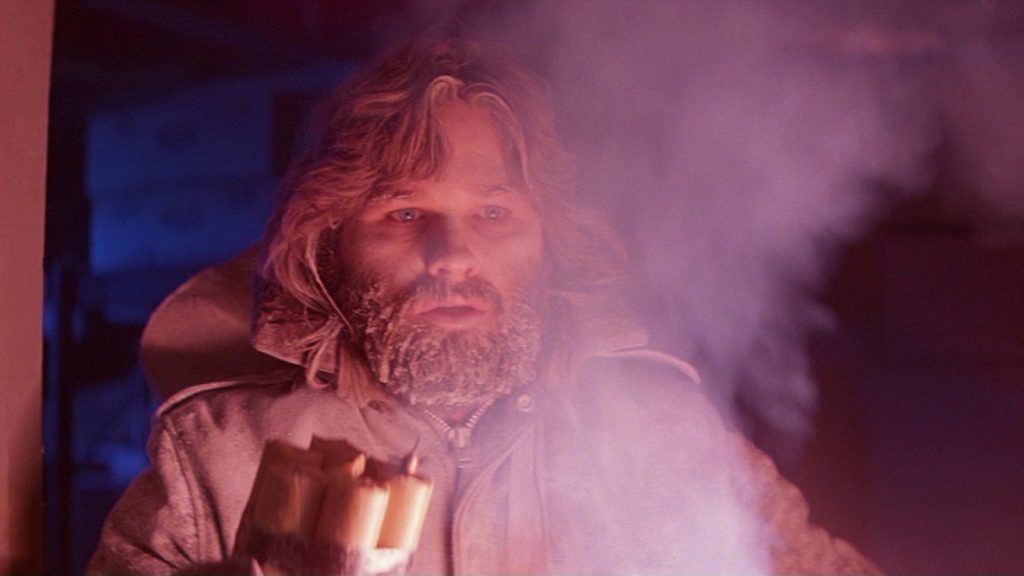“Big Trouble in Little China” (1986): A Dive into Cinematic Alchemy – Review

Let’s get this straight right out of the gate: “Big Trouble in Little China” is quite possibly the most 1980s thing to ever emerge from the 1980s, and that’s saying something given the decade spawned neon spandex, mullets, and leg warmers. Helmed by the visionary John Carpenter, this film embodies what it means to go big or go home, and, honestly, I don’t think it knows which one it’s doing.
Enter the Realm of Quirkiness
Jack Burton, played by a young(er) and absurdly confident Kurt Russell, is an all-American trucker who manages to get himself embroiled in a fantastical adventure within San Francisco’s Chinatown. Oh, and did I mention the ancient sorcerers, magic, and monsters thrown into the mix? Russell’s Burton isn’t really the typical hero you’d expect – he’s more like if John Wayne and a confused tourist had a love child.
It’s evident that Carpenter and Russell shared a particular synergy during the filming. This wasn’t their first rodeo together, having collaborated on other cult hits. Their off-screen camaraderie translated on-screen, adding layers to Burton’s character that, in lesser hands, might’ve made him completely forgettable.
David Lo Pan: Ancient Curse and Modern Menace
Lo Pan, portrayed by James Hong, is not your ordinary villain. He is an ancient sorcerer cursed by the gods for his wicked ways. The curse condemned him to live without a corporeal form, essentially rendering him a dreamy apparition. To break this curse and regain his human form, he needs to marry a woman with green eyes and then sacrifice her. You know, just your average wedding scenario. It’s this very quest that sets the plot of the movie into motion when Lo Pan believes he’s found his green-eyed bride in the form of Miao Yin.
Lo Pan has a particularly interesting duality. He switches between his decrepit old man appearance and a more vibrant, ghostly sorcerer form. This ancient being has been lurking in the shadows of San Francisco’s Chinatown, controlling the Wing Kong gang and searching for the key to break his curse for over two millennia.
Egg Shen: The Wise Old Sorcerer with A Twist
Enter Egg Shen, the wise old Chinatown sorcerer who acts as the Yin to Lo Pan’s Yang. Victor Wong brings this character to life, a seemingly ordinary tour bus driver who knows more about the ancient mysticism lurking beneath San Francisco’s streets than anyone would suspect.
Egg Shen is the beacon of knowledge, guiding Jack Burton and the audience through the tangled web of Chinese mysticism, sorcery, and the supernatural underworld. He’s the antithesis to Lo Pan, aiming to thwart the ancient sorcerer’s nefarious plans. Egg Shen uses his vast knowledge and impressive collection of magical artifacts to aid Jack and the gang. In one of the film’s most memorable scenes, Egg and Lo Pan have a “sorcery showdown,” proving that they are indeed powerful forces to be reckoned with.
While Egg Shen comes across as an unassuming figure, he is a crucial player in the overarching narrative of the movie. His depth of knowledge and powers are evident, especially when he reveals the existence of a rare potion that can level the playing field between mortals and ancient mystical beings.
A Blend of Myth and Movie Magic
One of the standout aspects of “Big Trouble in Little China” is its fearless blending of myth, humor, and action. The lore behind characters like Lo Pan and Egg Shen adds layers to the story, making it more than just a simple action flick. By drawing on ancient legends and myths, the film adds depth and authenticity to its fantastical plot. Both Lo Pan and Egg Shen, with their rich backstories and connection to ancient magic, stand as pillars that support the wild, unpredictable world of “Big Trouble in Little China.”
A Plot as Tangled as 80s Hair
The plot? Well, it’s the kind of narrative stew that results from tossing in martial arts, ancient Chinese mysticism, kidnappings, a green-eyed damsel in distress, and let’s not forget – an underworld literally under the city. A special nod to James Hong, who plays the sinister and age-obsessed David Lo Pan. His performance is both creepy and hilarious, a balance that few can strike.
There’s a good chance that half the time you’ll be wondering what exactly is happening on your screen. But fear not! The beauty of this film is that understanding the plot is secondary to enjoying the sheer spectacle of it all.
Behind-the-Curtain Shenanigans
The making of the movie was as wild as the storyline. Rumor has it that the script underwent massive rewrites, and some parts of the story were apparently conceived during filming. This sort of last-minute creativity is usually the thing of production nightmares, but here? Somehow, it all came together.
The film’s budget ballooned, and production details suggest the crew faced everything from intricate set challenges to ensuring all those martial arts sequences looked legit. The scale and ambition Carpenter had for this film were, arguably, way ahead of its time.
Cult Status and Legacy
Upon its release, “Big Trouble in Little China” was met with an underwhelming box office return and confused critics scratching their heads. Yet, like fine wine or that cheese you forgot about in the back of the fridge, it matured with age. The movie found its audience, mainly thanks to the burgeoning home video market, and embraced its rightful status as a cult classic.
In the realm of cinematic art, “Big Trouble in Little China” might not be hanging next to the “Mona Lisa,” but it sure has made its mark. It’s quirky, off-beat, and completely bonkers. And sometimes? That’s just the kind of movie magic the world needs.




